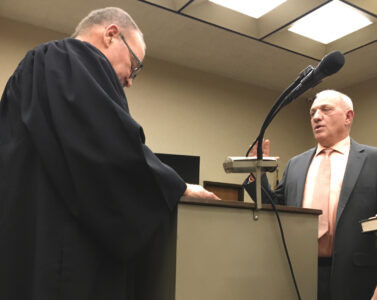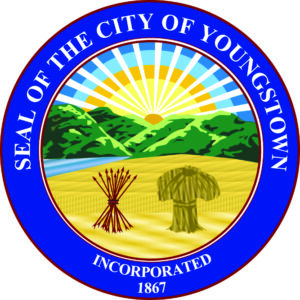Covelli, amp, Wean log 2nd-quarter loss
YOUNGSTOWN — The city-owned Covelli Centre, Youngstown Amphitheatre and Wean Park entertainment complex had its third-worst financial second quarter ever, losing $125,025.
“It was a difficult quarter with the shows not doing what we hoped,” said Eric Ryan, president of JAC Management Group, which operates the facilities for the city. “The second quarter is always volatile.”
The facilities were budgeted to lose $27,709 in the second quarter, between April and June. It lost more than four times that amount.
“We lost more than what we thought,” Ryan said. “We need the big shows to make money, and when you don’t have them, it’s difficult.”
The most notable show in the second quarter was a May 29 concert headlined by Riley Green at the amphitheater with 5,000 people in attendance.
In addition to shows with less attendance, there was the cost of removing the ice from the Covelli Centre, the home of the Youngstown Phantoms hockey team, at the start of the quarter and setting up the amphitheater, Ryan said. The Phantoms first home game of the 2025-26 season is Oct. 10.
The second quarter loss nearly wiped out the surplus made in the first quarter. During the first six months, the facilities had a $19,657 surplus.
In the 20 total second quarters since the Covelli Centre opened in October 2005, 11 had operating losses and nine showed surpluses. The amphitheater and park opened in 2019.
The only second quarters to lose more revenue than this year were 2007 with a $205,215 loss and 2020 with a $137,931 loss. During that second quarter in 2020, the facilities were closed because of the COVID-19 pandemic.
To show the volatility, the second quarter of 2024 had a $125,053 operating surplus. That’s a swing of $250,076 from 2024’s second quarter to this year’s.
The facilities generated $87,005 for the city from a 5.5% admission tax on tickets during this year’s second quarter, city Finance Director Kyle Miasek said.
The tax has provided $128,575 through the first six months of the year to the city.
The final two shows of the third quarter, which runs from July to September, were the Y-Live concert Friday headlined by John Mayer and today’s Y-Live concert with Tim McGraw, both at Wean Park.
McGraw’s concert was originally scheduled for Aug. 2, 2024, but had to be canceled because of the explosion and subsequent demolition of the former Realty Tower downtown near the facilities.
Because of the expense of putting on the shows, which are the largest-attended concerts at the facilities, the third quarter is expected to break even, Ryan said.
But the shows will generate more than $100,000 in admission tax for the city, he said.
The admission tax for the two Y-Live shows won’t show up in the third quarter financials because it is paid in October to the city.
This is the first year with two Y-Live shows at Wean Park, and that will continue in the future, Ryan said.
The cost of setting up the stage and the expenses of the outdoor concert means it makes financial sense to have major shows on back-to-back days, Ryan said.
The facilities should have a good fourth quarter and finish the year with an operating surplus and provide a considerable amount of money to the city from the admission tax, Ryan said.
Ryan said he expects the fourth quarter to pick up.
“We’ll still end the year on a positive note, and the admission tax will be great,” he said.
One issue in the fourth quarter will be the engagement of seven Disney on Ice shows that usually run in December but will instead run Jan. 2-4, the first quarter of 2026, Ryan said.
“We do about 20,000 people for those shows,” he said. “It’s good for 2026, but not for 2025.”
The facilities have finished with operating surpluses every year since 2009.
2nd-quarter trends
Second-quarter operating losses and surpluses for the Youngstown-owned Covelli Centre, Youngstown Foundation Amphitheatre and Wean Park. The center opened in October 2005 while the amphitheater and park opened in 2019.
2006: $107,671 loss
2007: $205,215 loss
2008: $10,669 loss
2009: $11,087 surplus
2010: $65,959 surplus
2011: $37,561 loss
2012: $229,740 surplus
2013: $205,857 surplus
2014: $577 surplus
2015: $85,803 loss
2016: $26,721 loss
2017: $84,267 loss
2018: $77,427 surplus
2019: $26,032 surplus
2020: $137,931 loss
2021: $26,177 loss
2022: $88,333 loss
2023: $15,847 surplus
2024: $125,053 surplus
2025: $125,025 loss



